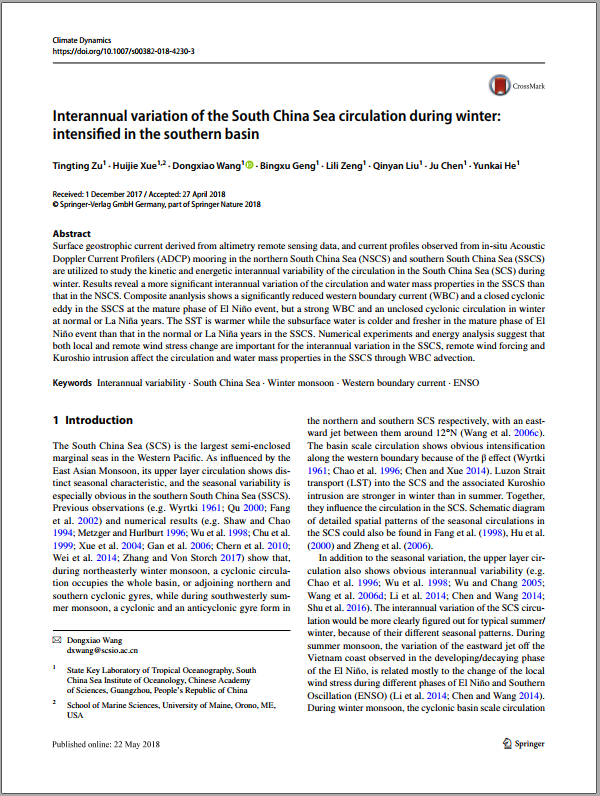Abstract
Surface geostrophic current derived from altimetry remote sensing data, and current profiles observed from in-situ Acoustic Doppler Current Profilers (ADCP) mooring in the northern South China Sea (NSCS) and southern South China Sea (SSCS) are utilized to study the kinetic and energetic interannual variability of the circulation in the South China Sea (SCS) during winter. Results reveal a more significant interannual variation of the circulation and water mass properties in the SSCS than that in the NSCS. Composite ananlysis shows a significantly reduced western boundary current (WBC) and a closed cyclonic eddy in the SSCS at the mature phase of El Ni?o event, but a strong WBC and an unclosed cyclonic circulation in winter at normal or La Nina years. The SST is warmer while the subsurface water is colder and fresher in the mature phase of ElNino event than that in the normal or La Nina years in the SSCS. Numerical experiments and energy analysis suggest that both local and remote wind stress change are important for the interannual variation in the SSCS, remote wind forcing and Kuroshio intrusion affect the circulation and water mass properties in the SSCS through WBC advection.




 粤公网安备44011502001245号
粤公网安备44011502001245号